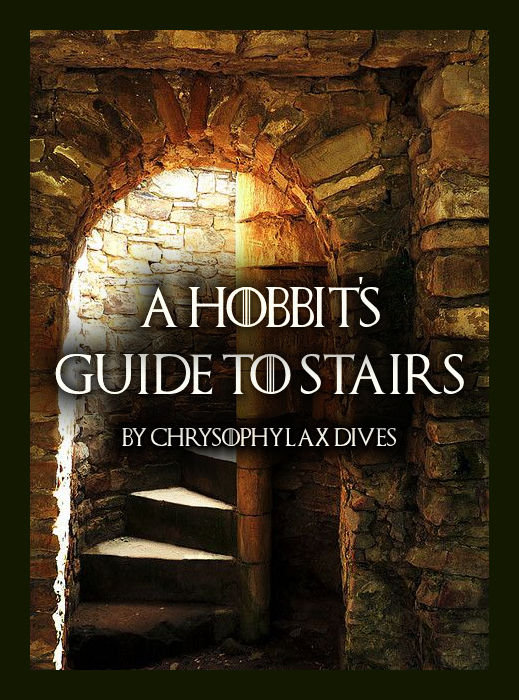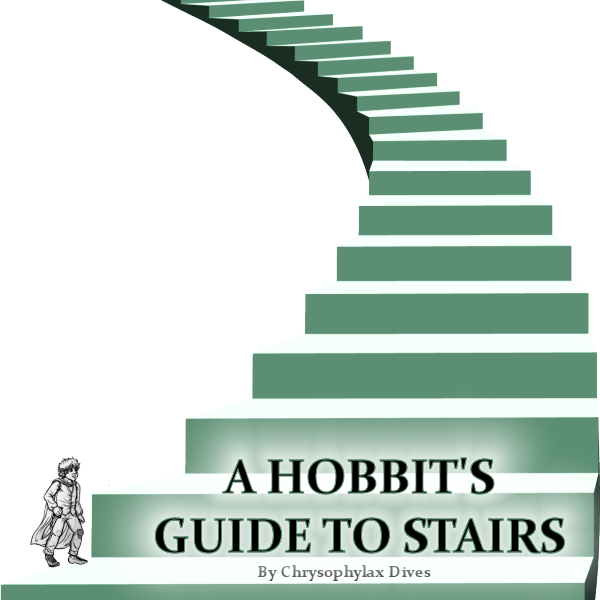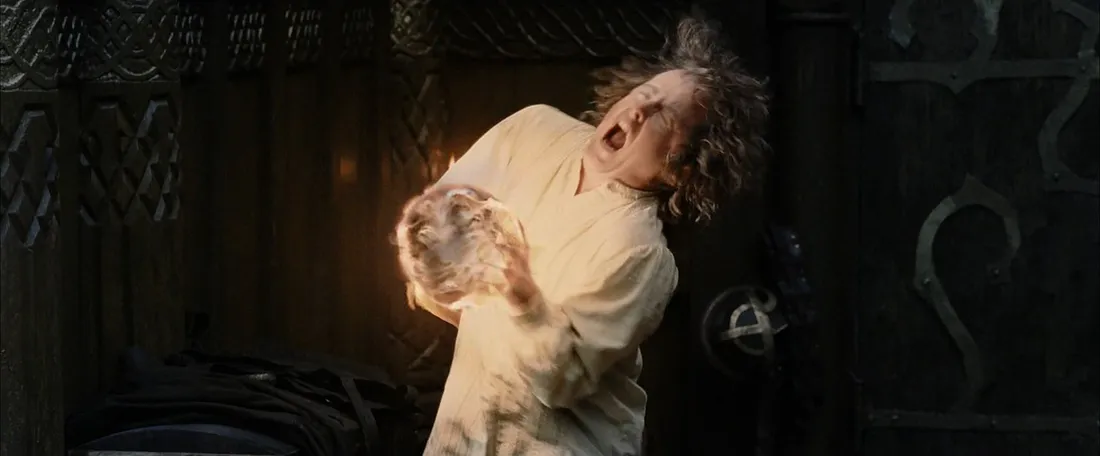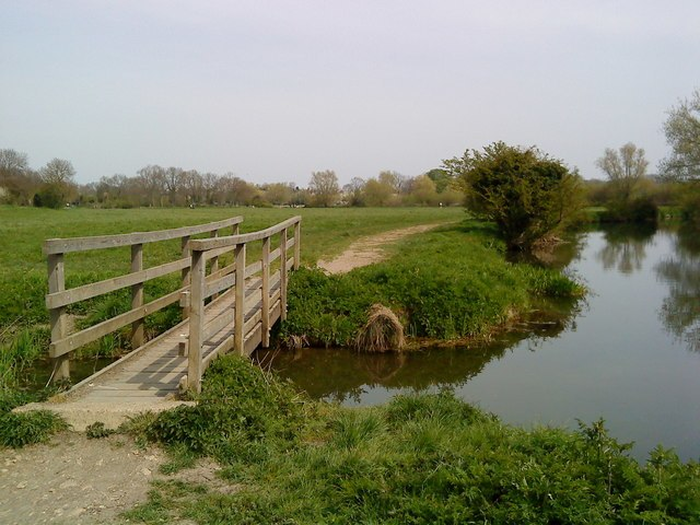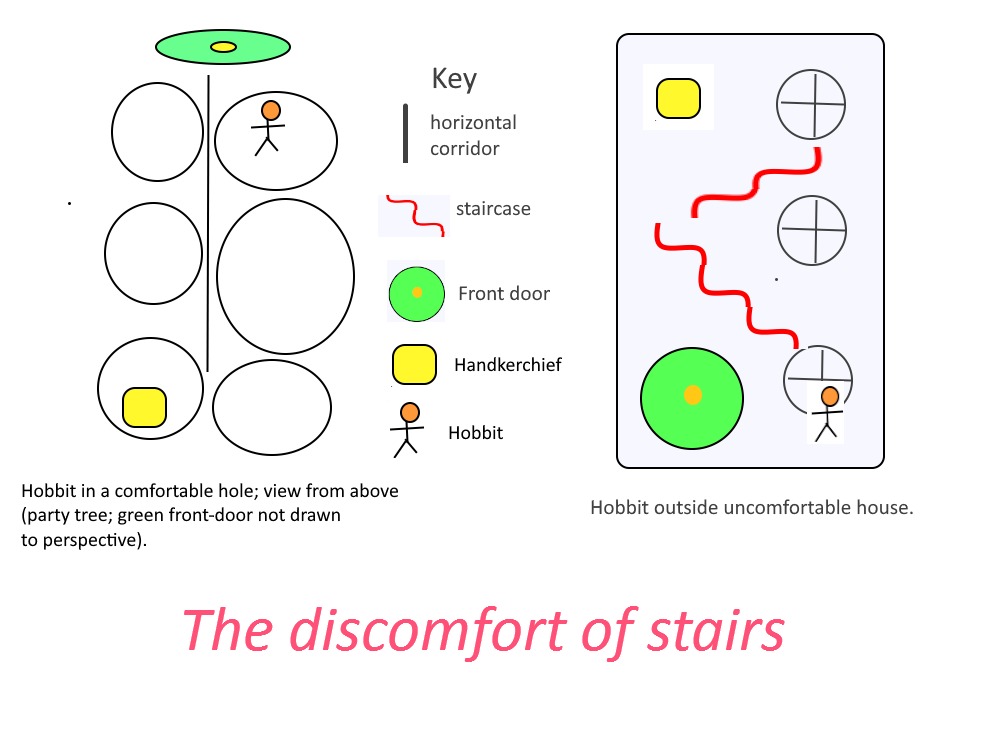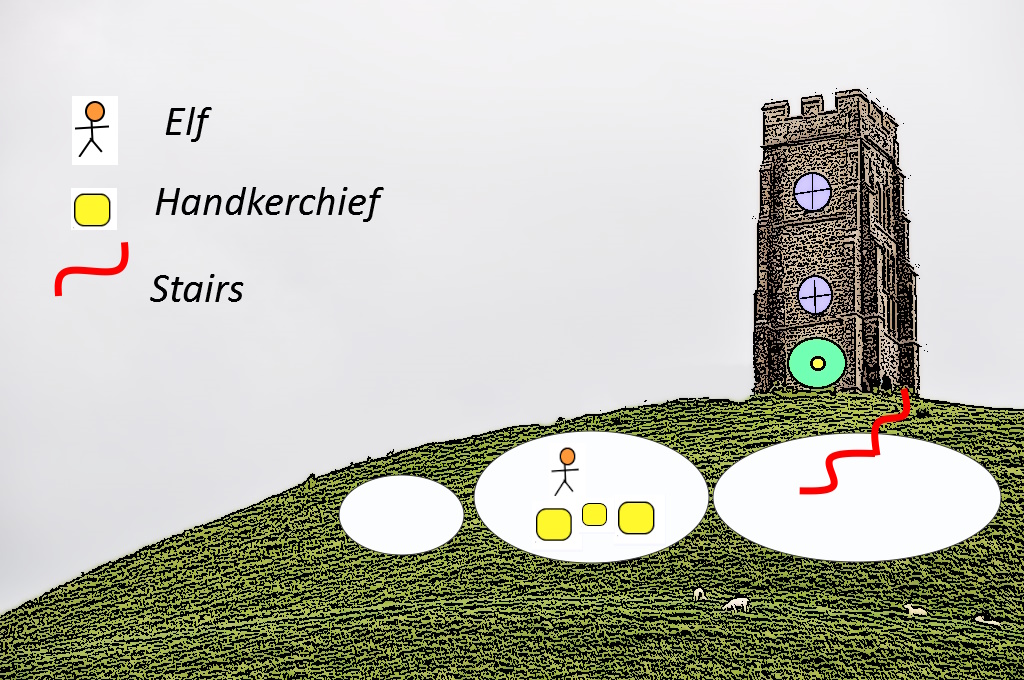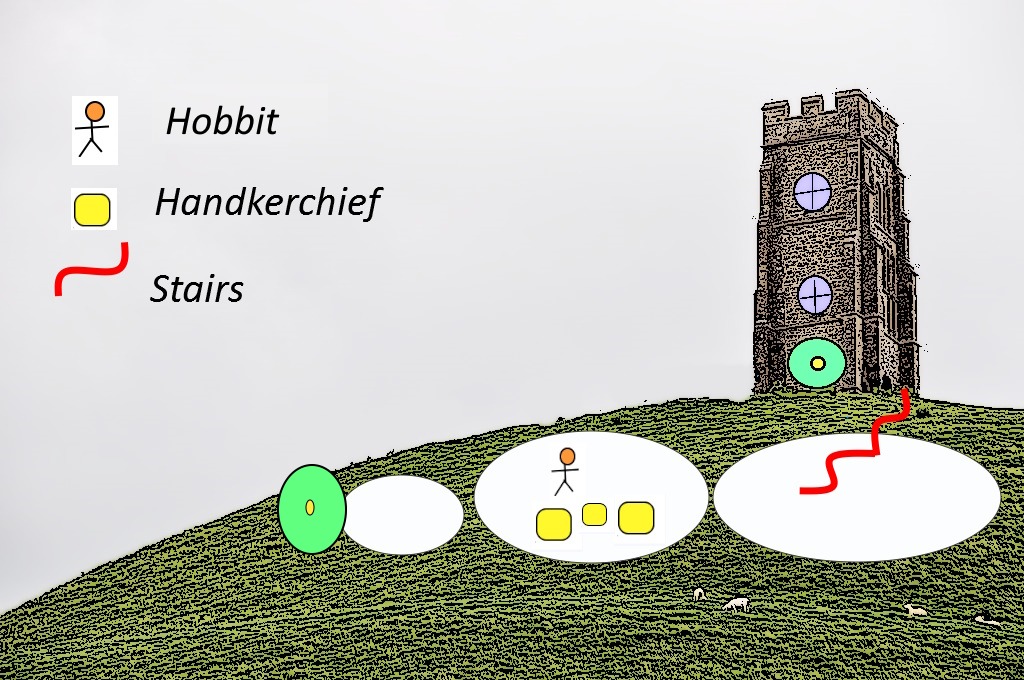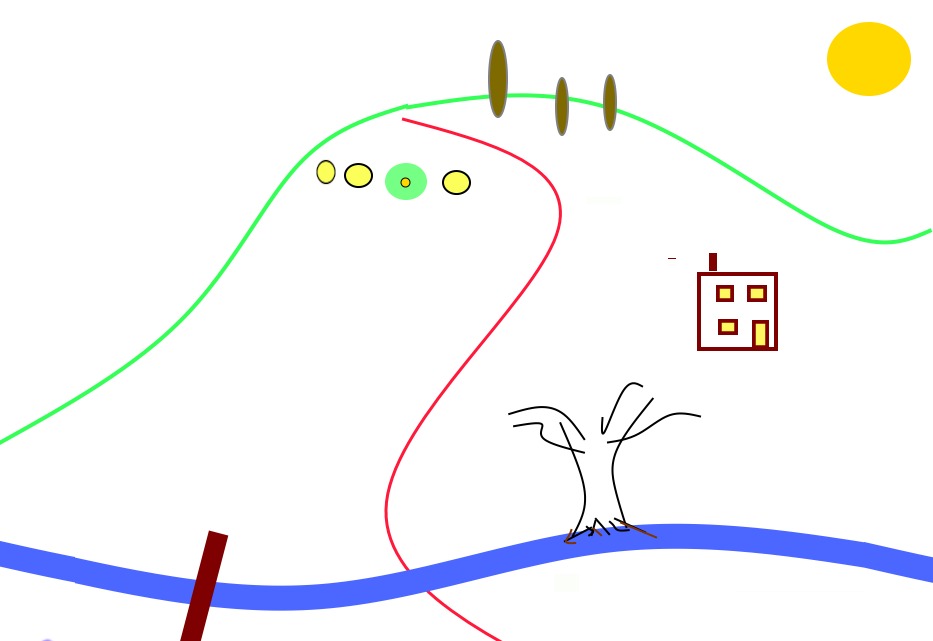Wednesday 3: Stairs and Prejudice
This is a tricky post because it opens the door on sensitive issues of Hobbit prejudice.
'The Hill' (above) – Tolkien’s picture of Bag-end and the land down to the Water – is an image of Hobbit social stratification. The Shire is hierarchical, and only the gentry live in luxurious top-of-the-hill holes, like Bag-end. But these are heads of families, not aristocrats, and Hobbit reproduction along with the relative scarcity of hills long ago prompted Hobbits to learn the art of building. To live in a house is common, and no sign of poverty nor delinquency.
Many Hobbits have houses. Some Hobbit houses have stairs. Not all, to be sure – the house at Crickhollow does not, and I recall none at the Maggots. Yet some do, and more than one might care to mention, at least on the outside. Consider the reunion of Sam and Rosie.
Sam hurried to the house. By the large round door at the top of the steps from the wide yard stood Mrs. Cotton and Rosie, and Nibs in front of them grasping a hay-fork. (LotR VI, viii)
A Hobbit romance on stairs: Sam goes up them, Rosie sends him down them back to Frodo, only to run down herself and tell Sam to come straight back. Yet the Hobbit scribe situates the romance on 'steps.' A critical reader of the Red Book suspects retrospective gentrification.
The Cottons and the Gamgees will be the great families of 4th Age Hobbiton, but at the end of the 3rd Age the Cottons live in a house and the Gamgees had lived in a hole below Bag-end at the top of the Hill (see the illustration last Wednesday) - a modest yet respectable hole with two windows, lending nuance to the social binary of hole-dwelling as described in the Prologue.
Actually in the Shire in Bilbo’s days it was, as a rule, only the richest and the poorest Hobbits that maintained the old custom. The poorest went on living in burrows of the most primitive kind, mere holes indeed, with only one window or none…
The situation is more nuanced than the hole versus house contrast might suggest, and properly speaking one must distinguish between the steps outside a hobbit house and the 'stairs' that - one presumes - connect the two levels of a multi-story house (one must presume because internal staircases are discretely hidden by walls).
So far as I can see, it is the internal stairs - not the house nor even the extended door-steps - that are beyond the pale. The house of the Cottons is above the level of the yard, which is only sensible in a farm. But what are
other Hobbits doing adding second floors? Yet some do, as The Hill illustrates - though there is no hint that the Cotton house has an internal staircase!
●◌◊□
Within Hobbit society this use and misuse is apprehended - that is to say, first borrowed from another people and then registered in their own words - in terms not of class but the outside world.
Population pressure long ago pushed Hobbits out of the desirable hilly regions of the Shire and into flatlands like the Marish – where a horizontal home requires walls and a roof. The Hobbits, it is said in the Prologue, learned this art of building either from Elves or from Men, yet it is also noted that over long years their building had been “improved by devices, learned from Dwarves, or discovered by themselves.”
A people who improve a foreign art with their own devices domesticate the art: houses no longer appear foreign in the eyes of the Hobbits. But a careful reader of
The Hobbit (or the last post) will recognize ‘Dwarvish devices’ as a euphemism for stairs, which - it appears - have never been domesticated, properly speaking.
□●◌◊
All Hobbits know that some Hobbits have stairs, and all Hobbits hold internal stairs as foreign. Polite Hobbits do not mentions the stairs of other Hobbits.
